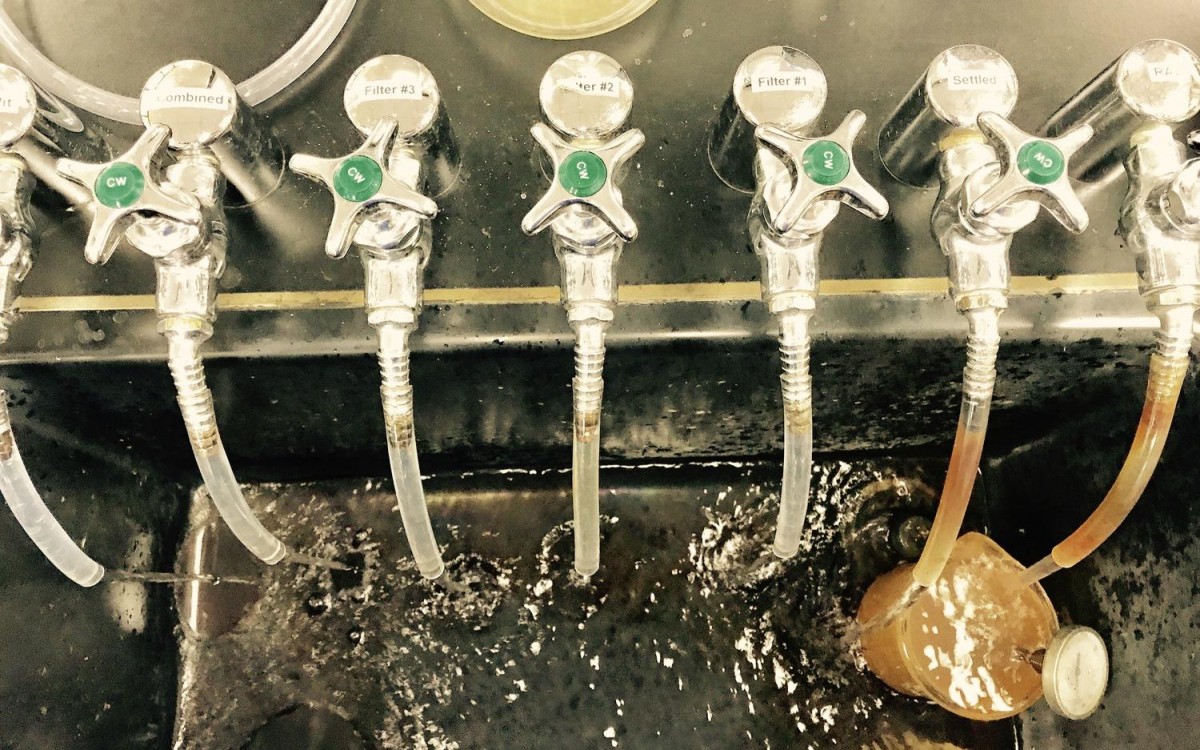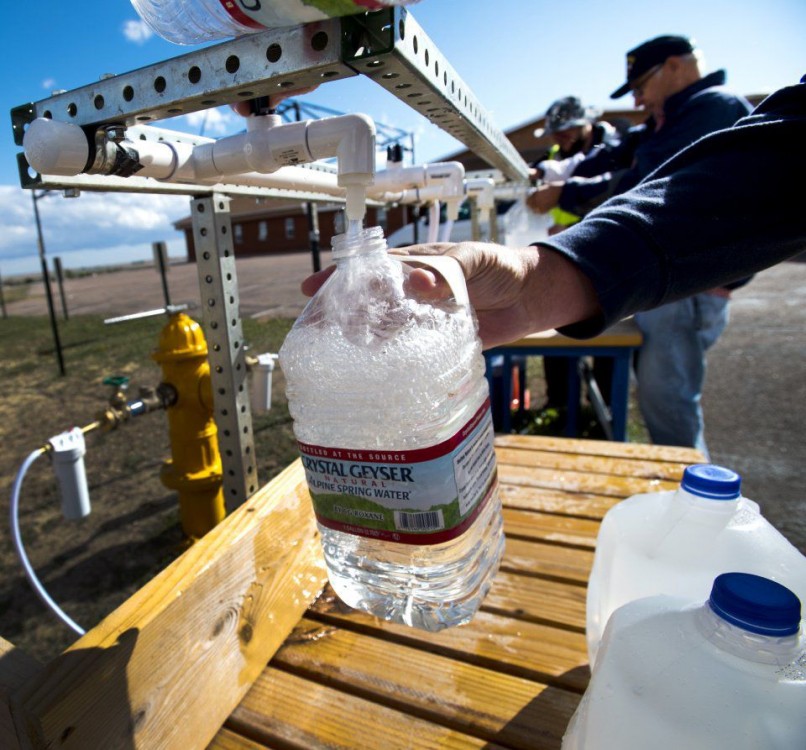
The Trump administration will not set a drinking water limit for two toxic chemicals that are contaminating millions of Americans' tap water, two sources familiar with the forthcoming decision told POLITICO.
The expected move is yet another sign of the administration's reluctance to aggressively deal with the chemicals, which have been used for decades in products such as Teflon-coated cookware and military firefighting foam and are present in the bloodstreams of an estimated 98 percent of Americans.
And it comes less than a year after the White House and the Environmental Protection Agency faced criticism for delaying publication of a health study on the chemicals, which a White House aide had warned could trigger a "public relations nightmare."
EPA's decision means the chemicals will remain unregulated under the Safe Drinking Water Act, according to sources familiar with a still-unreleased draft plan that acting administrator Andrew Wheeler signed off on in late December. That means utilities will face no federal requirements for testing for and removing the chemicals from drinking water supplies, although several states have pursued or are pursuing their own limits.
The decision could complicate Wheeler's confirmation to lead the agency on a full-time basis. Both Republicans and Democrats have pressed EPA to do more to keep the chemicals out of drinking water and raised alarms about past political interference from the administration.
The chemicals, known as PFOA and PFOS, have been linked to kidney and testicular cancer, hypertension and other ailments. Major chemical companies like 3M as well as the Defense Department would face billions of dollars in liability from aggressive efforts to regulate and clean up the chemical, which has contaminated groundwater near hundreds of military bases and chemical plants.
While EPA has decided against a drinking water limit, the draft chemical plan includes a decision to list those two chemicals as hazardous under the Superfund law, according to the two sources, a move would help force polluters to pay for cleanup.
The agency said it would not discuss the plan's contents until it is made public.
"The action plan is currently undergoing interagency review," EPA spokesperson John Konkus said by email.
It is unclear when the plan will be released, but it could come soon now that the partial government shutdown is over. During his confirmation hearing earlier this month, Wheeler told the Senate Environment and Public Works Committee that the plan had initially been scheduled for release in late January — but he refused to promise that it would set a drinking water standard for the chemical.
"I cannot make that commitment," Wheeler told Democratic Sen. Tom Carper of Delaware.
Sen. Shelley Moore Capito (R-W.Va.), whose state has a major PFOA contamination problem, also pressed Wheeler on how he would handle the issue.
"We are going to be recommending and moving forward on a number of different areas under a number of different statutes," Wheeler told her. He specifically cited the EPA's Superfund toxic cleanup program as well as a recently revised regulatory framework for chemical safety.
The committee is scheduled to vote on Wheeler's nomination Feb. 5; Republicans have a one-seat majority on the panel. In the full Senate, Wheeler also likely would have to allay concerns from Republicans in other states that have experienced major problems with the class of chemicals, including North Carolina.
Federal scientists last summer concluded that PFOA and PFOS pose dangers at extremely low concentrations in a health assessment that POLITICO reported Trump administration officials initially sought to block.
EPA-mandated testing has found the chemicals at unsafe levels in at least 16 million Americans' tap water, but activists say the problem is even more widespread.
When an advocacy group reanalyzed federal monitoring data to include lower levels of contamination, it estimated that as many as 110 million Americans may be drinking water with levels of the chemical that could cause harm. The problem is particularly acute near military bases, more than 400 of which the Pentagon suspects to be contaminated with the chemicals.
In order to regulate a chemical under the Safe Drinking Water Act, EPA must show not only that the contaminant is dangerous, but also that setting a limit offers "a meaningful opportunity for health risk reduction" and that doing so is financially justified.
Congress established these requirements in amendments to the Safe Drinking Water Act in 1996. They have proven to be major hurdles to new regulations: EPA has not regulated a new contaminant under the drinking water law since then.
EPA issued a voluntary health advisory for PFOA and PFOS in 2016, recommending a lifetime limit in drinking water of 70 parts per trillion for both chemicals. A handful of states have established their own drinking water limits, some of which are significantly stricter than the EPA guidance. But other states have lacked the scientific expertise to act on their own, and have struggled to explain to their residents why their limits differ from those in neighboring states. Public health advocates say these are reasons a federal drinking water standard is necessary.
But some state and local officials, as well as rural water utilities, have argued against a federal drinking water standard. They say the problem is localized and that utilities across the country should not have to pay to test their water if they are unlikely to find the chemicals.
The Trump administration has generally pushed to have states take the lead in environmental regulations, and has taken some steps that suggested it may prefer that approach to setting a federal drinking water limit. For instance, officials at EPA opted to release only toxicity information for two other chemicals in the same class, called GenX and PFBS, and left it to the states to use that information to decide what a safe limit is.
A number of the political appointees at EPA come from industry backgrounds, including the No. 2 political official in the chemical safety office, who previously worked for the chemical industry's main lobbying group. The No. 2 official in the agency's Office of Research and Development came to the agency last fall from Koch Industries.
Industry groups, including the American Chemistry Council, have backed the Trump administration's work on the class of chemicals, expecting that it will be as industry-friendly as they can hope for.
The Trump administration's approach to PFOA and PFOS has also been shaped by the Defense Department, which faces potentially massive liability for the hundreds of contaminated sites it owns around the country.
Internal emails show that Pentagon officials last year raised alarm with the White House over a draft study from the Centers for Disease Control and Prevention that found the chemicals cause harm at far lower levels than EPA had said were safe. And POLITICO reported earlier this month that the Defense Department sought to hire a scientist with a reputation for downplaying chemicals' risks to work on PFOA and PFOS, even though his prior work on the chemicals was so controversial that even Republicans had opposed his nomination for an EPA post.













